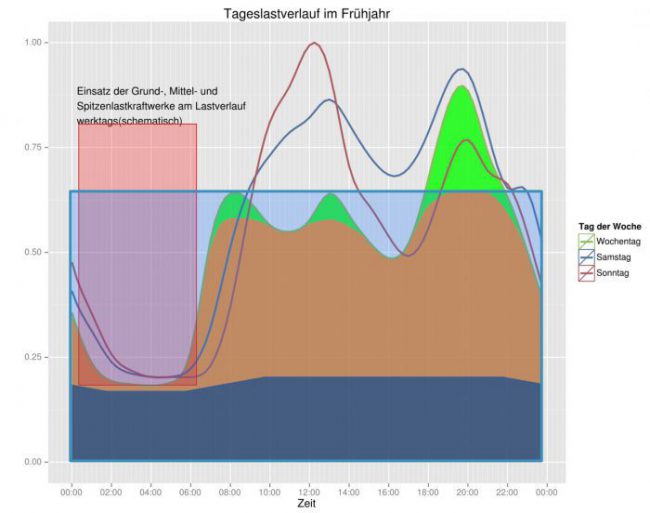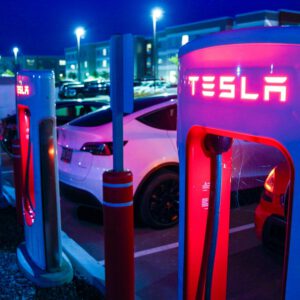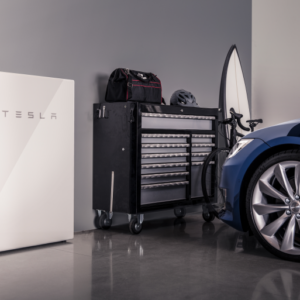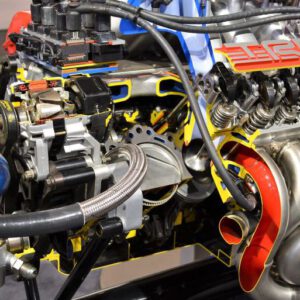When discussing electromobility, people often say that when all cars would be electric cars in the future, the amount of electrical energy needed would be too much. This could not be generated by current power plants. Here I want to show you that at least for Germany this is not true. The current energy production is enough to charge all cars, even if all of them would be electric. This will be similar for other European countries.
Energy production
In Germany, the total electrical energy generation in 2018 was 646,8 TWh1https://de.wikipedia.org/wiki/Stromerzeugung#Bruttostromerzeugung_nach_Energietr%C3%A4gern, which is 1.77 TWh per day. The distribution of that energy generation over the day is shown in the figure below.2https://de.wikipedia.org/wiki/Bedarf_an_elektrischer_Energie The green line shows the distribution during weekdays, the blue line shows the distribution on Saturdays, and the red line on Sundays. The blue part is the energy generated by large power plants with a continuous output. The orange part is generated by medium-load power plants, and the green parts are generated by peak power plants.

Power plants that continuously deliver electrical energy typically are cost-effective plants like coal, nuclear, run-of-river power plants. In Central Europe, these types cover about 30% of the energy need.
Medium-load power plants include oil, gas, and storage power plants. These plants can react flexibly to larger fluctuations in demand. These power plants cover about 40% of the electrical energy need.
However, to be able to compensate for all fluctuations in the demand, peak load power plants are needed, like gas turbines and pumped storage power plants. Such plants can start their operation at short notice for a short time to meet the short-term high energy demand.
The figure also shows that during the night, the energy production is much lower. This means that all flexible power plants have to reduce their output, which is not efficient. The red square shows the amount of energy that could be produced during the night in Germany.
During 6 hours at night, 25% (~442 GWh) can be generated (see red square in the figure).
Energy needs for e-mobility
The energy needed to charge all cars during the night can also be computed. Therefore, we need the maximum number of cars that will have to be charged and the average amount of energy per car. The total number of cars in Germany in 2018 was 47 million.3https://www.kba.de/DE/Statistik/Fahrzeuge/Bestand/jaehrlich/2019_b_barometer.html;jsessionid=A7728A768EBB9C36FB1E489EB1909687.live11294?nn=2084378
The average driven distance per car per day in Germany is less than 50 km.4https://www.kba.de/DE/Statistik/Kraftverkehr/VerkehrKilometer/verkehr_in_kilometern_node.html We can compute the energy need for charging all electric cars in Germany. We use the following assumptions:
- 40 million of 47 million cars are BEVs (the rest are fossil fuel cars),
- All cars are charging at night,
- ~10 kWh is recharged (this is an equivalent of more than 50 km),
- No local photovoltaic installation is used.
This leads to the following computation: 40 million x ~10 kWh = ~400 GWh. This is less than the 442 GWh that already can be delivered at this moment. When local photovoltaic installations are used, the energy needed from power plants would be even less.
Conclusion
From the facts above, we can conclude that in Germany the amount of electrical energy produced during the night is sufficient to charge all cars, even when they would be electric. When these cars are charged by using local photovoltaic installations, the energy needed from power plants would be less. Further, the efficiency of electric cars will get better over time, so the energy needed will get less than 10kWh per car per night.




